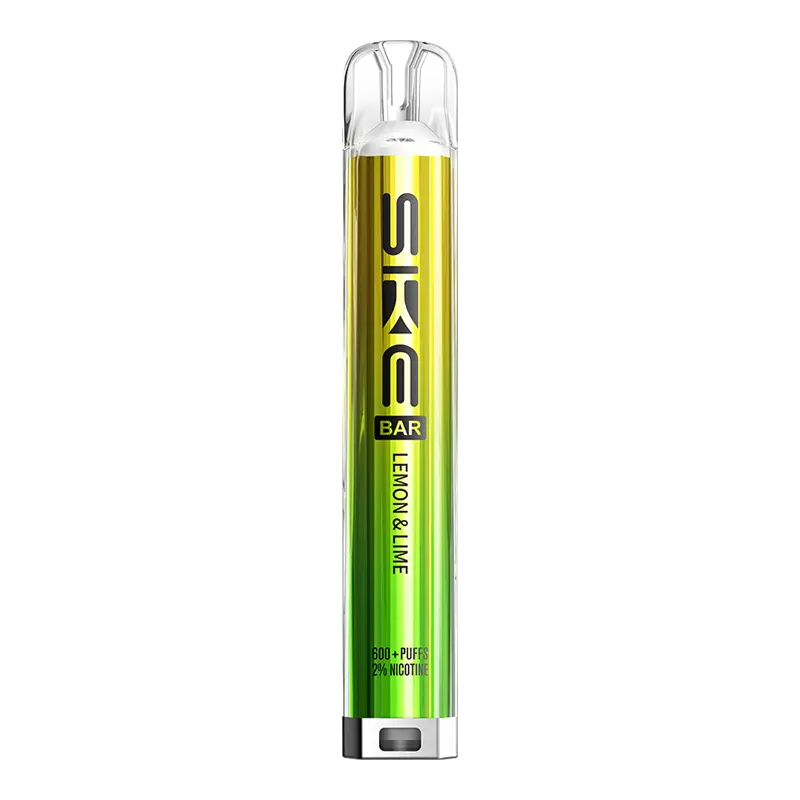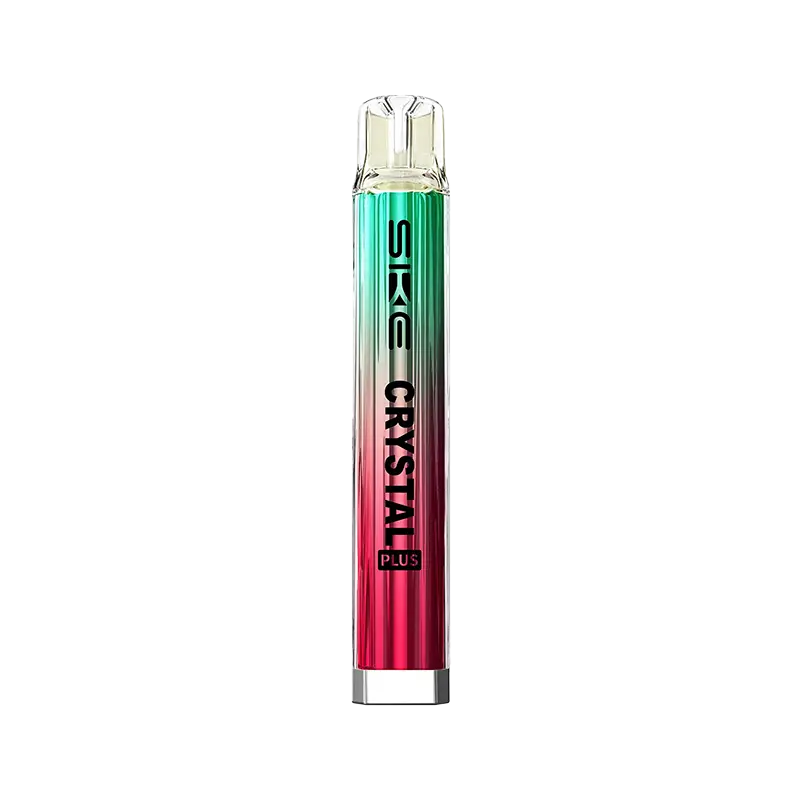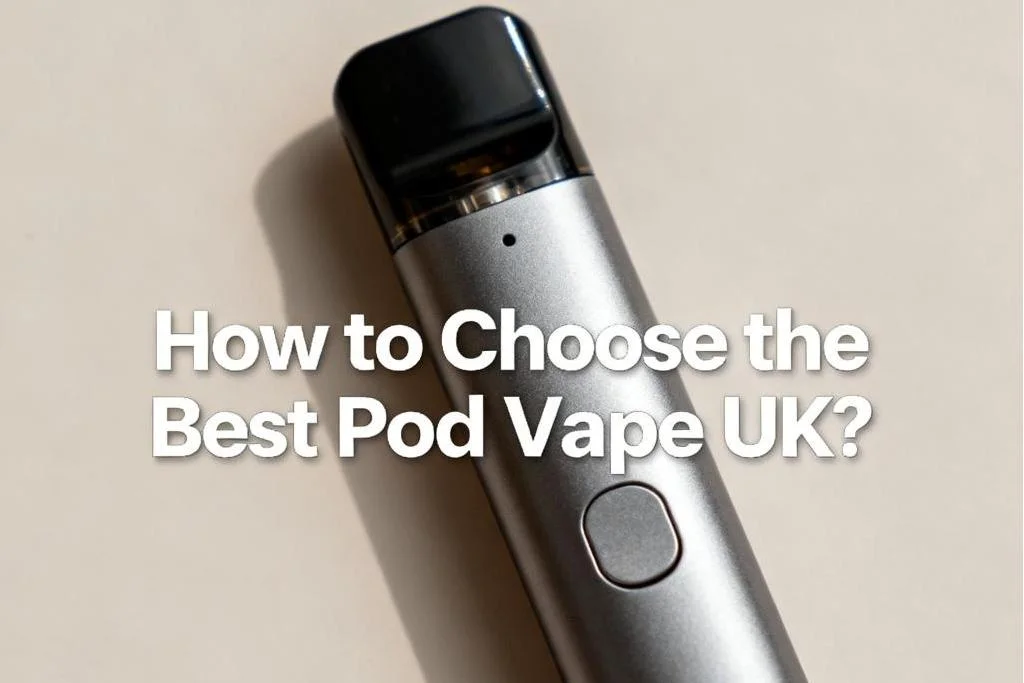Vaping After Tooth Extractions – The Ultimate Guide
Got a fresh tooth extraction and itching to pick up your vape again? Hold up — there's more to it than just puffing away. From healing tips to avoiding dreaded dry sockets, this guide breaks it down so you can vape smart, heal faster, and avoid turning a little snag into a big headache. Let's clear the air on vaping after tooth extraction and get you back to enjoying your clouds safely!
Can I Vape After Tooth Extraction?
The short answer? No, it's not advisable to vape immediately after a tooth extraction. Here's the deal: vaping right after tooth extraction can interfere with the delicate healing process. So, while it's tempting to reach for your vape to ease the cravings, it's best to wait until your dentist gives the green light before reaching for your vape.

What Happens if You Vape After Tooth Extraction?
Vaping too soon after tooth extraction can lead to serious complications, putting your healing process at risk. Here's a detailed breakdown of what may happen:
1. Risk of Dry Socket
- What is a Dry Socket?
Dry socket, or alveolar osteitis, is a painful condition when the blood clot at the tooth extraction site is dislodged or fails to form properly. The clot is vital because it protects the underlying bone and nerves while aiding in healing. Without it, the extraction site becomes exposed, leading to severe discomfort.
- How Does Vaping Cause It?
The suction created when inhaling vapor can physically disrupt the fragile blood clot. Even a single puff can pull the clot loose, leaving the area vulnerable.
- Symptoms to Watch For:
If you develop a dry socket, you may experience intense, throbbing pain radiating to your jaw or ear, a foul taste or smell in your mouth, and visible bone in the extraction area.
- Why Is It a Big Deal?
A dry socket may cause significant pain and delay the healing process. It often requires a return visit to your dentist, who might clean the area, place a medicated dressing, and prescribe additional treatments.
2. Delayed Healing
- The Role of Nicotine:
Nicotine, a common component of many e-liquids, constricts blood vessels, reducing circulation and slowing the delivery of oxygen and essential nutrients to the extraction site, impeding tissue repair.
- Chemical Effects:
Chemicals in nicotine-free vapor, such as propylene glycol and flavorings, can irritate the wound and hinder recovery since they aren't designed for direct exposure to raw tissue and can hinder recovery.
- How It Prolongs Recovery:
When your body struggles to repair the extraction site, you may face lingering pain, increased swelling, and delayed closure of the wound, leaving you more susceptible to further complications.

3. Increased Risk of Infection
- Open Wound Vulnerability:
A tooth extraction leaves an open wound, which is highly susceptible to bacterial contamination. Vaping introduces both vaporized chemicals and oral bacteria into this vulnerable area.
- Compounds in Vapor:
The ingredients in e-liquids, including flavorings and byproducts of vaporization, can coat the wound and create an environment that supports bacterial growth.
- Infection Risks:
Infections can cause symptoms like fever, pus drainage, increased pain, and swelling. If untreated, they may require antibiotics or even surgical intervention to resolve.
4. Aggravation from Heat and Chemicals
- The Impact of Heat:
Warm vapor from vaping irritates exposed nerves and tissues at the extraction site, exacerbating swelling and increasing pain.
- Chemical Irritation:
The compounds in vapor are not sterile and can trigger additional inflammation in the already sensitive area. Even non-nicotine e-liquids aren't free from substances that may disrupt the healing environment.
- Why This Matters:
Aggravating the extraction site with heat or chemicals causes discomfort and increases the likelihood of a slower recovery and additional complications.
5. Prolonged Discomfort
- Lingering Pain:
When the extraction site doesn't heal properly due to vaping, you may experience extended pain and tenderness for weeks instead of days.
- Swelling and Inflammation:
By introducing harmful irritants and reducing circulation, vaping can cause persistent swelling that takes longer to subside.
- More Dental Visits:
Complications such as dry sockets or infections often require extra dentist visits for treatment, adding inconvenience and potential costs.

How Long After Tooth Extraction Can I Vape?
The timeline for resuming vaping after a tooth extraction depends on how well your healing process progresses and your dentist's specific advice. Typically, most dentists recommend avoiding vaping for at least 72 hours (three days) after the procedure, but in some cases, they may advise waiting up to 7–10 days for a safer recovery.
1. The First 24–72 Hours: The Critical Healing Phase
The blood clot forms at the extraction site within the first few hours after the procedure, acting as a protective barrier and kickstarting the healing process. This stage is incredibly delicate, as the clot can easily be dislodged.
2. Days 3–7: Early Tissue Repair
By the third day, the clot begins stabilizing, and your body starts repairing tissue around the wound. However, this process is still in its infancy, and the extraction site remains highly sensitive.
3. After 7–10 Days: Safer to Resume
By a week to 10 days, the extraction site typically starts forming new gum tissue, and the risk of dislodging the blood clot diminishes. However, healing times can vary based on factors like the complexity of the extraction, your overall health, and how closely you've followed post-op care.
Factors That May Extend the Wait
Complex Extractions: Wisdom teeth or impacted teeth often require more time for recovery.
Pre-existing Conditions: Smoking or vaping regularly before surgery, diabetes, or compromised immunity can slow healing.
Nicotine Use: If your e-liquid contains nicotine, you may need to wait longer, as nicotine can further delay recovery.

How to Vape After Tooth Extraction?
If you've waited for your dentist's approval to vape again after a tooth extraction, it's crucial to proceed cautiously. Even when the healing process is underway, the extraction site remains sensitive, and vaping improperly can still generate complications.
1. Wait Until You're Cleared by Your Dentist
- Why It Matters: Jumping back into vaping too soon can undo all the progress your body has made in healing. Even if you feel fine, internal tissues might still be fragile.
- Timing Is Key: Most dentists recommend waiting at least 72 hours to 10 days, depending on your recovery, before vaping again. If you're unsure, ask your dentist to evaluate your healing status.
2. Reduce Suction Force
- How to Adjust Your Technique: Instead of taking deep, forceful drags, opt for light, gentle inhales. High suction can still disrupt the newly formed gum tissue and aggravate the site.
- Use Devices with Adjustable Settings: Many modern vape devices allow you to control airflow and suction levels. Choose the lowest setting to minimize strain on your mouth.
3. Use Nicotine-Free E-Liquids
- Why Go Nicotine-Free? Nicotine constricts blood vessels, reduces oxygen supply to the healing tissue, and prolongs recovery. Switching to nicotine-free options eliminates this risk.
- Temporary Switch: Even if you prefer nicotine, consider a temporary switch to nicotine-free e-liquids until the extraction site has fully healed.
4. Opt for Cooler Vapor
Adjust Temperature Settings: Lower the temperature if your vape device allows it to produce cooler vapor. Heat can irritate the extraction site and delay tissue regeneration.
Avoid Hot Flavors: Spicy or intensely flavored e-liquids can also cause irritation, so stick to mild flavors during recovery.
5. Rinse Your Mouth Regularly
Keep the Area Clean: Rinse your mouth gently after vaping with warm salt water or a dentist-recommended mouthwash to help clear away residue and reduce the risk of bacterial buildup.
Be Gentle: Avoid vigorous swishing to prevent disturbing the extraction site.
6. Monitor for Any Signs of Complications
- What to Watch For: Be alert for symptoms like sharp pain, swelling, bleeding, or a foul taste, which could signal a dry socket or infection.
- When to Act: If you notice any of these symptoms, stop vaping immediately and consult your dentist.
7. Take Breaks Between Sessions
- Why It Helps: Frequent vaping increases exposure to vapor, heat, and chemicals, which can strain your healing gums. Space out your sessions to give your mouth time to recover.
- Stay Hydrated: Drink water after each session to keep your mouth moist and prevent irritation.
8. Focus on Post-Op Oral Hygiene
- Brush with Care: Continue brushing and flossing as your dentist advises, avoiding the extraction site until it fully heals.
- Follow Your Dentist's Guidance: Adhering to your dentist's aftercare instructions carefully to support smooth healing.
Vaping after tooth extraction requires caution and patience. By waiting for your dentist's approval, using gentle techniques, and prioritizing your oral health, you can reduce the risks and vape responsibly during recovery. Remember, your long-term dental health is worth the extra care and effort!

FAQs: Vaping After Tooth Extraction
Q1: Does Vaping Cause Dry Socket After Tooth Extraction?
Yes, vaping can cause dry sockets after tooth extraction because it disrupts the delicate healing process. The act of vaping creates conditions that increase the likelihood of this painful complication, making it a risk for those recovering from oral surgery.
Q2: How Does Vaping Cause a Dry Socket?
Vaping contributes to dry sockets in several ways:
- Suction Effect: The negative pressure created by vaping can pull the blood clot away from the extraction site, leaving it exposed.
- Chemical Exposure: E-liquid components, including nicotine and flavorings, can irritate and disrupt the fragile healing tissues.
- Heat Impact: Warm vapor can aggravate the sensitive wound, potentially affecting clot stability and tissue recovery.
Q3: Can I Vape Without Getting a Dry Socket?
While it's difficult to completely eliminate the risk, you can reduce it by taking these precautions:
- Wait for Clearance: Avoid vaping for at least 72 hours, or longer if advised by your dentist.
- Use Minimal Suction: Take light inhales instead of deep drags to minimize pressure on the blood clot.
- Opt for Nicotine-Free E-Liquids: Nicotine slows healing and increases the likelihood of complications.
- Cool Your Vapor: Lower your vaping device's temperature to reduce irritation from heat.
Even with these measures, the safest option is to wait until your extraction site has fully healed before resuming vaping.
Q4: Does Vaping Affect Healing?
Yes, vaping can negatively affect healing by interfering with the body's natural recovery process and potentially prolonging the time needed to heal fully.

Vaping after tooth extraction requires patience and caution to avoid serious complications like dry sockets, delayed healing, and infection. While the urge to vape might be strong, prioritizing your recovery is essential for long-term oral health. Remember, a little restraint now will save you from unnecessary pain and setbacks later. Always put your recovery first and consult your dentist if you're unsure about when to vape safely.
TABLE OF CONTENTS
- Can I Vape After Tooth Extraction?
- What Happens if You Vape After Tooth Extraction?
- 1. Risk of Dry Socket
- 2. Delayed Healing
- 3. Increased Risk of Infection
- 4. Aggravation from Heat and Chemicals
- 5. Prolonged Discomfort
- How Long After Tooth Extraction Can I Vape?
- 1. The First 24–72 Hours: The Critical Healing Phase
- 2. Days 3–7: Early Tissue Repair
- 3. After 7–10 Days: Safer to Resume
- Factors That May Extend the Wait
- How to Vape After Tooth Extraction?
- 1. Wait Until You're Cleared by Your Dentist
- 2. Reduce Suction Force
- 3. Use Nicotine-Free E-Liquids
- 4. Opt for Cooler Vapor
- 5. Rinse Your Mouth Regularly
- 6. Monitor for Any Signs of Complications
- 7. Take Breaks Between Sessions
- 8. Focus on Post-Op Oral Hygiene
- FAQs: Vaping After Tooth Extraction
- Q1: Does Vaping Cause Dry Socket After Tooth Extraction?
- Q2: How Does Vaping Cause a Dry Socket?
- Q3: Can I Vape Without Getting a Dry Socket?
- Q4: Does Vaping Affect Healing?






















